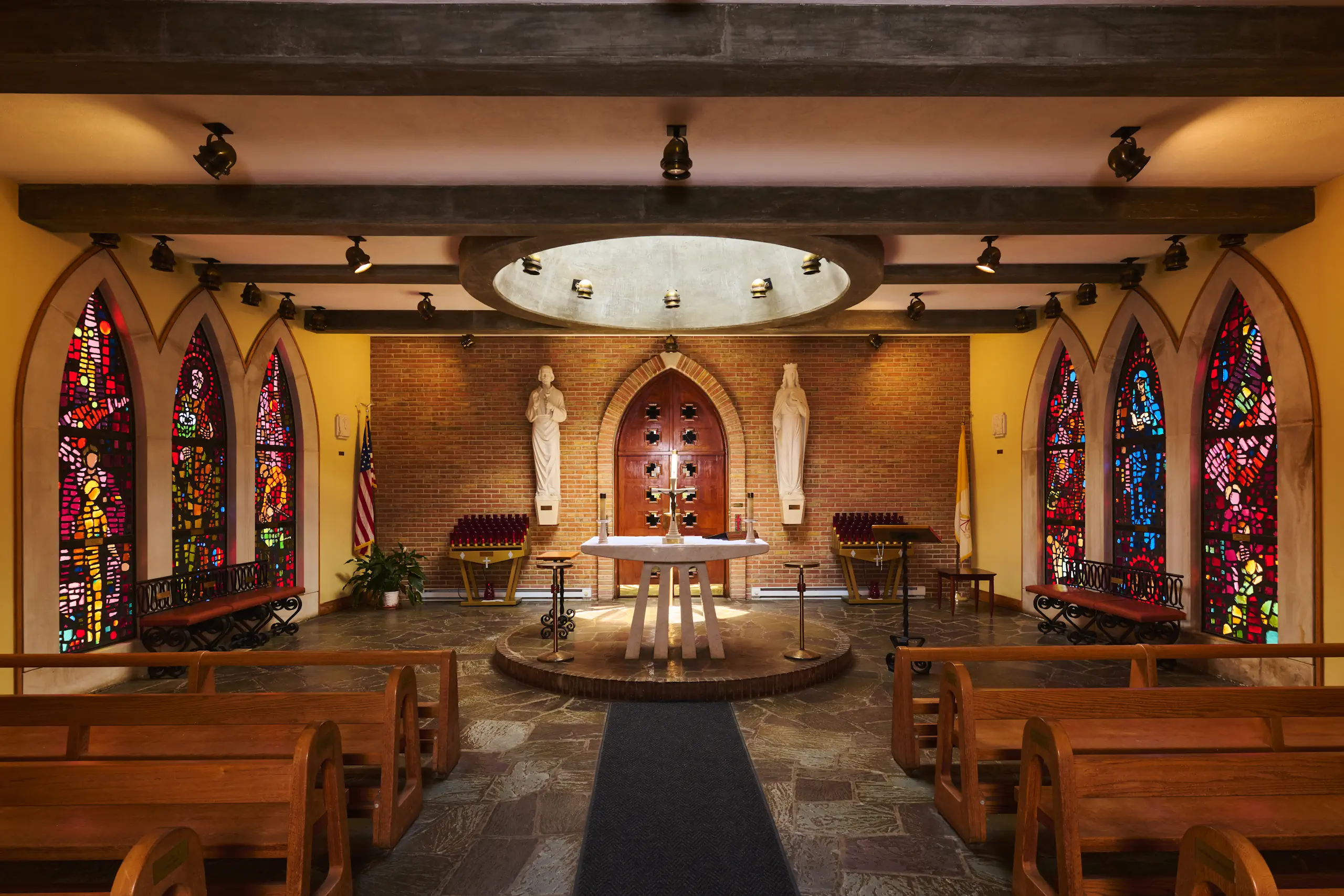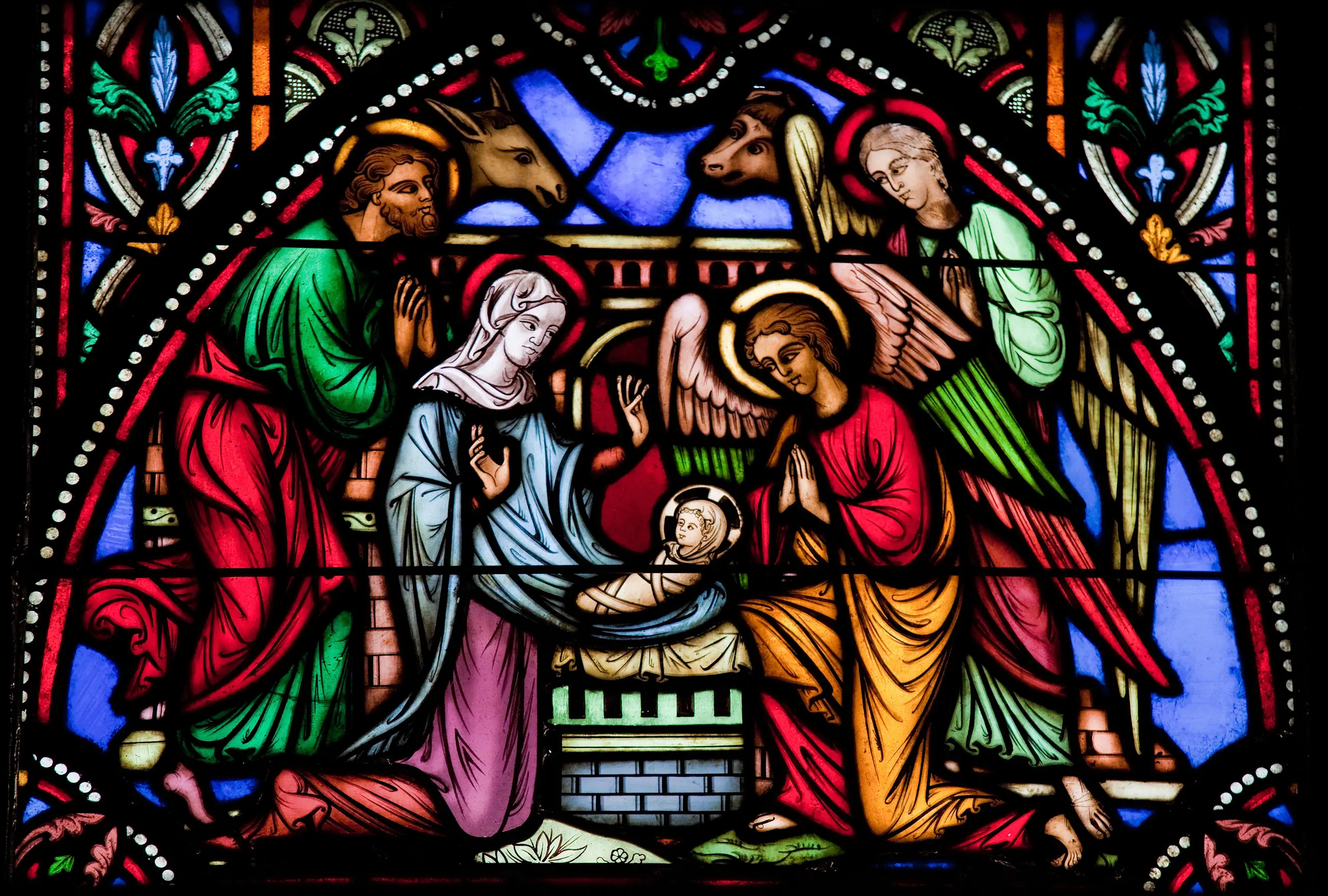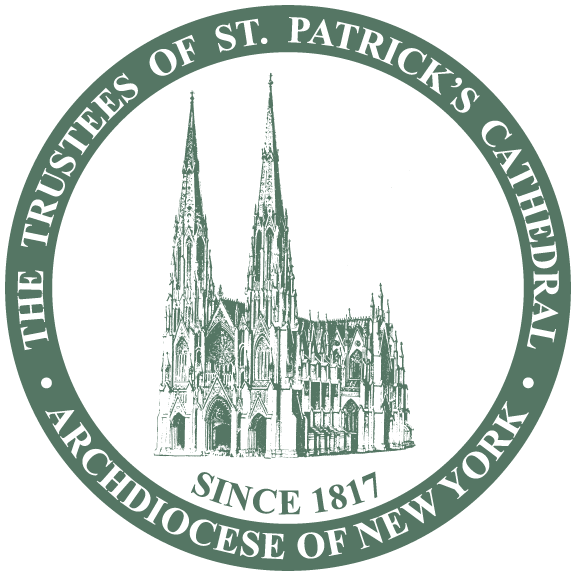The Architectural and Spiritual Relevance of Gate of Heaven’s Chapel

A Sacred Space Born from Vatican II’s Vision
Vatican II—or the Second Vatican Council—was one of the most significant events in modern Catholic history. Held from 1962 to 1965, it was called by the beloved Pope St. John XXIII, who felt the Church needed “aggiornamento”—an Italian word meaning “bringing up to date” or “renewal.” Pope John wanted to “open the windows and let in some fresh air,” helping the Church better connect with people in our modern world.
The St. Francis of Assisi Chapel at Gate of Heaven Cemetery was built with the Pope’s vision in mind; and it is a sacred space that holds profound meaning both architecturally and spiritually.
The Chapel and Garden Mausoleum, which were opened in 1969, represents something truly special in our Catholic heritage. Built during the beautiful renewal period following Vatican Council II*, this chapel embodies the Church’s vision of bringing the faithful closer to the sacred mysteries, even in our final resting places.
The chapel’s design is quite remarkable, as it features a central chapel that connects to eight separate mausoleum structures, creating a holy campus where prayer, remembrance, and eternal rest combine in perfect harmony. It’s as if the architects understood that death is not an ending, but a doorway to eternal life with our Lord.
A Living Sanctuary
What makes this chapel so dear is that it remains a living sanctuary. Every first Saturday of the month at 10:00 a.m., faithful parishioners gather for Holy Mass within these sacred walls, bringing comfort to families visiting their loved ones. To be able to attend Mass in the very place where those dear to them rest in peace—it’s a profound testament to our belief in the Communion of Saints.
The Franciscan Spirit
The dedication to St. Francis of Assisi is particularly moving. Our beloved saint, the patron of ecologists and God’s creatures, seems to watch over Gate of Heaven cemetery, where many deer, geese, fox and other animals make their home. How perfectly this reflects St. Francis’s own love for all of God’s creatures. It reminds us that even in death, we remain part of the beautiful tapestry of life woven by our Creator.
Architectural Harmony with Sacred Tradition
The chapel demonstrates thoughtful reverence for the cemetery’s original Gothic Revival design, which was established when Cardinal Farley consecrated these grounds in 1918. While embracing the architectural language of the late 1960s, the builders maintained deep respect for the sacred character that Charles Wellford Leavitt Jr. envisioned in his landscape design.
The integration is graceful—modern design elements that speak to contemporary needs while honoring the Gothic Revival principles that give Gate of Heaven its distinctly Catholic character. It’s a beautiful example of how our Church embraces both tradition and modernity.
A Testament to Faith Through Time
The beautiful chapel represents our Church’s living tradition. Built during that remarkable period of Catholic renewal following Vatican II, it reflects the Church’s desire to create sacred spaces that draw the faithful closer to Christ in mourning and remembrance.
The chapel’s interior spaces, including what is lovingly called “The Blue Room,” symbolize the careful attention given to creating an environment conducive to prayer and contemplation. Every architectural detail seems designed to lift the soul heavenward.
A Sacred Witness
My dear friend, the St. Francis of Assisi Chapel stands as a loving witness to our Catholic understanding that sacred architecture serves not merely aesthetic purposes, but spiritual ones. It reminds us that our Church’s buildings—whether grand cathedrals or cemetery chapels—are meant to be earthly reflections of our heavenly home.
This chapel, with its continual celebration of the Holy Sacrifice of the Mass and its peaceful integration with God’s natural creations, offers comfort to grieving families and hope to all who visit. It speaks to the eternal truth that in Christ, death has no victory, and that our earthly journey leads to our true home with the Father.
An Enduring Legacy
Church architects continue to study and care for this sacred space. Recent studies by Lothrop Associates Architects have examined “the feasibility of the restoration,” showing the deep commitment to preserving this holy place for future generations of the faithful.
In sum, Gate of Heaven’s chapel is an enduring monument to peace and remembrance and life everlasting.
Related Articles

October 15, 2025
Creating a Sacred Family Legacy: How Catholic Mausoleums Honor Faith and Unite Generations
In the tapestry of Catholic tradition, few decisions carry the profound spiritual weight of choosing a final resting place. While the practical considerations of end-of-life planning often dominate discussions, [...]

